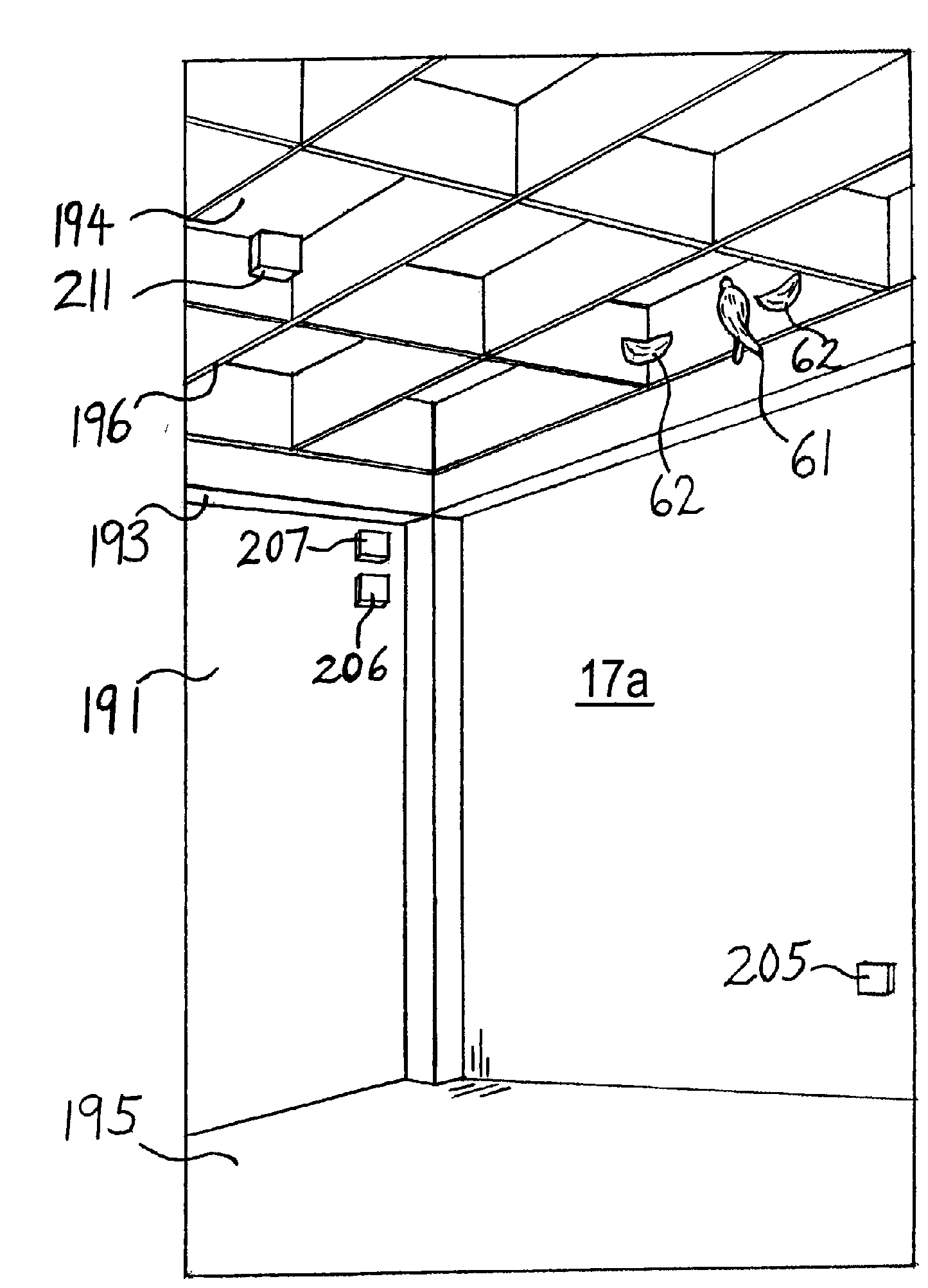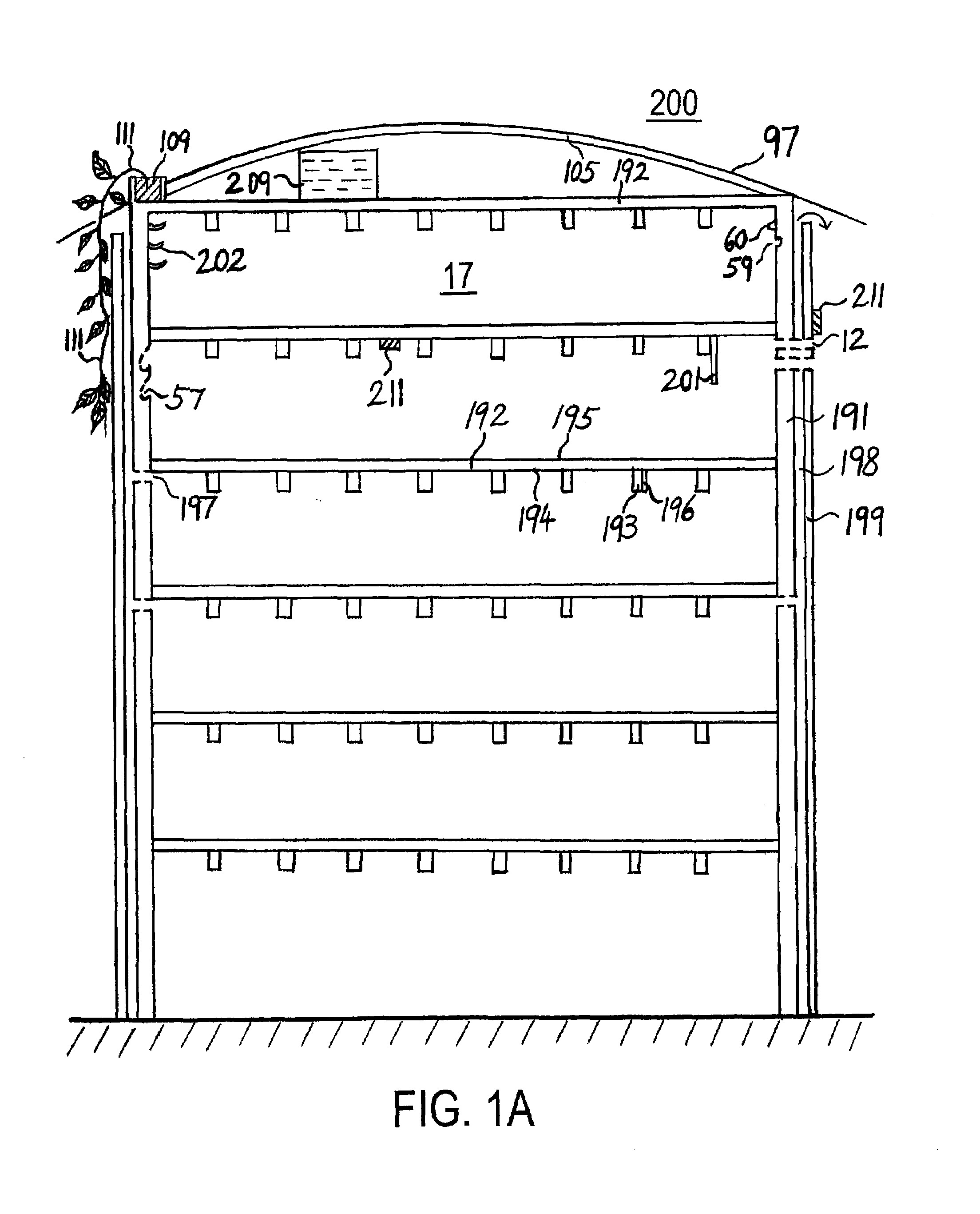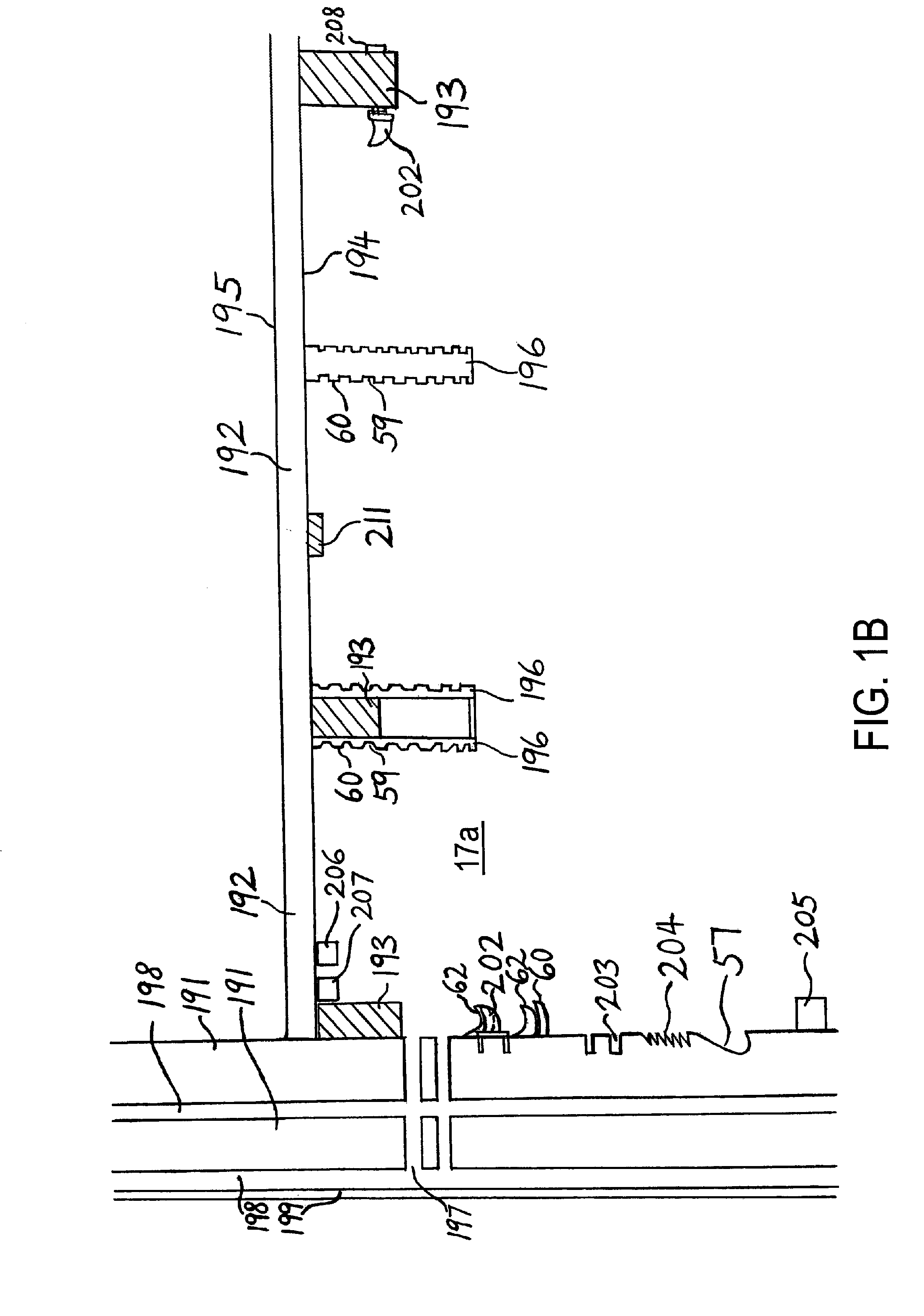[0055]To this end the present invention provides a method to
breed and domesticate swiftlets in an edible bird's nest farm and production facility comprising of: a dedicated swiftlets housing structure 200, wholly man made artificial caves
system 100 and / or converted natural relief such as caves, valleys, cliffs forming the nesting
habitat and artificial eco-
system 356; and associated supporting sub-facilities; methods, systems, specialized techniques, equipment and apparatus. A dedicated facility specially configured for the commercial production of edible bird's nest including persuasive inducement of providing shelter, food and water for wild swiftlets; obtaining fertilized eggs for
captive breeding,
hatching, caring for the hatchlings and young chicks, rearing, developing familiarity and bonding of the hatchlings with human handlers; and transmigration of young chicks from swiftlets shelters 11 and 14 to large commercial production facilities 100, 200 and 356. Provision of the five basic necessities of live comprising shelter, food, water, safety and security at one singular gathering point is an extremely convenient and user-friendly feature of present invention which is beneficial to swiftlets conservation. A life of comfort and luxury provided and accorded in exchange for their abandoned nest.
[0059]An object of the present invention is to provide a method and system including facilities, apparatus and techniques for the large scale
domestication, breeding and rearing of swiftlets for their nests, commercial production techniques, managed sustainable harvesting of nests by way of
electronic identification, tracking and monitoring to avoid disruptive repeated collection, and safe collection of edible bird's nests to satisfy the
appetite of connoisseurs and to meet market demand without harming
wildlife. A
scientific method of farming including the provision of apparatus and techniques beneficial to avian husbandry and the conservation of wild swiftlets capable of producing edible bird's nests. Scarcity of supply relative to global demand serves to artificially inflate the high prices of this “
delicacy.” It is a fact that edible bird's nests comprises a
delicacy, a culinary and gastronomic delights of the Orient; and an essential ingredient in Asian “
traditional medicine” practices; a tonic and an invigorating
health food for the rich and affluent to pep up their energy levels.
[0061]The methods as disclosed may create a new niche industry in
animal husbandry for large volume production of edible bird's nests in commercial farms comprising man-made swiftlets-shelters such as specialized production facilities 100, 200 and transformed natural relief 356, thus providing the traditional edible bird's nest industry steeped in the harvesting of wild nests with an alternative supply of commercially farmed edible bird's nests. This includes a cleaner, healthier and high quality source of
health food product produced in a controlled environment by means of modern scientific farming techniques. Commercial farming possess advantages such as economics of scale,
high productivity, quality and efficiency; safe breeding environment for swiftlets free from predators and enemies, safe and easy harvesting of edible bird's nests; provision of shelter, food and water including specialized apparatus, equipment, facilities and techniques designed, configured and tailor made for the edible bird's nest production facilities 100, 200 and 356;
quarantine capability, modern management techniques, deployment of professional expertise such as veterinarians and ornithologists, avian medications,
vaccination against
disease and sickness, etc. in favorable conditions that only a farm environment can provide. Such advantages may be used to maximize the swiftlets
population by minimizing mortality rates, thus increasing productivity and efficiency of the farm 113 and 23. Farmed edible bird's nest provides connoisseurs with a choice of consuming such nests with a clear conscience, secure in the knowledge that they have not harmed wild-life. But have in fact, helped in the conservation of
wild species of swiftlets by making a conscious personal choice in choosing farmed products, in preference, over
wild life related products of questionable origin.
[0062]Included in the swiftlets breeding and edible bird's nests production facility of present invention are specialized equipment such as predator traps; arrangement to exclude or keep out predators from the nesting
habitat; commercial breeding and production facilities for
insect grubs; extensive cultivation of cover plants enveloping the man made structures and nesting
habitat in greenery forming ecologically and
environmentally friendly swiftlets eco-farms; a grid of criss-crossing overhead nesting panels and boards hanging down from the ceiling specifically designed for swiftlets to
perch vertically and to build nests during the breeding season. Such a structural configuration and design
layout provides for ease of collecting and harvesting edible bird's nests produced safely; designs incorporating safety features into the constructions, apparatus and safety devices such as self-dispensing cage structure 350, vertical
perch feeder 314, to minimize fledgling mortality rates;
pest control measures including use of soda ash to soak, desiccate and kill fleas, ticks and lice; and cleaning of nesting panels 69 and boards 196 with
high pressure water jets.
[0063]Achievement of the desired micro-habitat environ / or parameters comprising a temperature of 26 to 28 deg. C.,
relative humidity of 75 to 90% and
darkness may be enabled by means of novel structural arrangements, configuration, fundamental concepts and innovative
engineering designs. New conceptual designs should be used to address and to achieve the ultimate objective of providing a swiftlets shelter with a compatible micro-habitat environment. Note the use of additional auxiliary equipment to achieve removal of micro-habitat limitations created by short comings in design configuration, even though such additional equipment may be used to complement
design strategy and to overcome limitations and shortcomings in structural configurations, as they impose additional overhead, recurring, and maintenance costs. As increased production costs reduce cost-efficiency ratio and profitability of farm 113 and 23.
 Login to View More
Login to View More  Login to View More
Login to View More 


